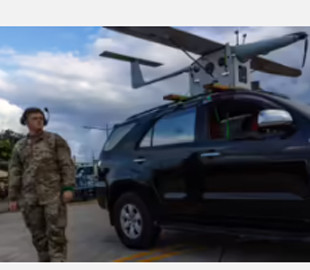
The US Department of Defense has ordered the K1000 Ultra Long-Endurance (K1000ULE) system – unmanned aerial vehicles operating on solar batteries – for the Army's 1st Multi-Domain Battle Group, as well as for special forces.
The $20 million order is said to be one of the largest funding for the Accelerate the Procurement and Fielding of Innovative Technologies (APFIT) program, created in 2022 to accelerate the procurement of innovative technologies.
The K1000ULE is reportedly designed to to 'mimic nature' by using artificial intelligence to fly silently like a bird and generate clean energy on board.
Such a drone is the most durable electric, emission-free autonomous aircraft in its size and weight category, because the K1000ULE provides network expansion for communications, electronic warfare, as well as intelligence and monitoring.
200% Deposit Bonus up to €3,000 180% First Deposit Bonus up to $20,000The drone has been actively used by the US military in various Pacific islands ocean, particularly in the Philippines and Guam, during the annual Balikatan exercises.
In spring maneuvers, the K1000ULE performed data collection tasks over the South China Sea for the unit, and the aircraft was used in several experiments such as the Edge exercise and Project Convergence.
The K1000ULE has solar panels on its wings, allowing it to significantly increase the duration of the flight. It set the endurance record for Class 2 unmanned aerial vehicles, clocking 76 hours in the air.
The aircraft has a simple design, no landing gear, and lands on 3D-printed sliding parts that can be replaced after wear. He also has a high unusual ability to "disguise" — most sensors and radars mistake it for a bird.
Also, the drone can be quickly prepared for launch: it takes less than 10 minutes to deploy, assemble and launch. It uses the wind to take off, rising from the roof of a vehicle, making the system extremely mobile and ready for field use.
Given that the US Army is winding down the Shadow UAS program, the K1000 could be an ideal candidate to replace older drones and performing tasks of various sizes with less logistical burden.

